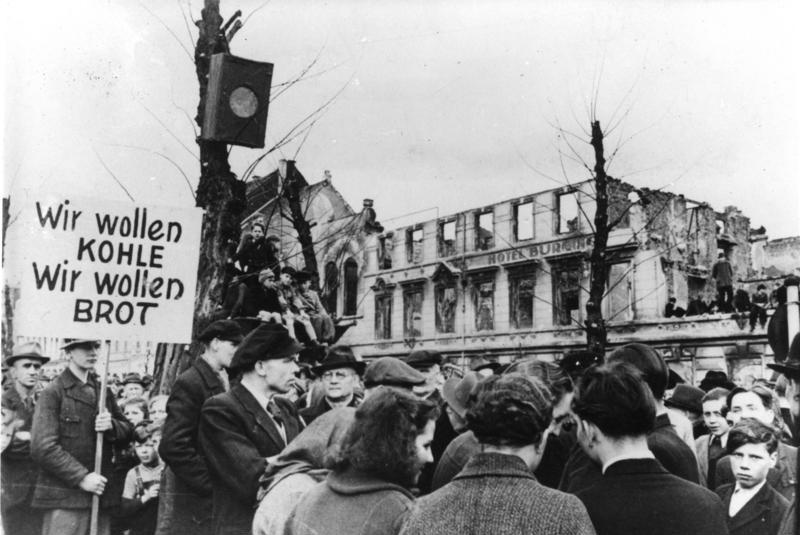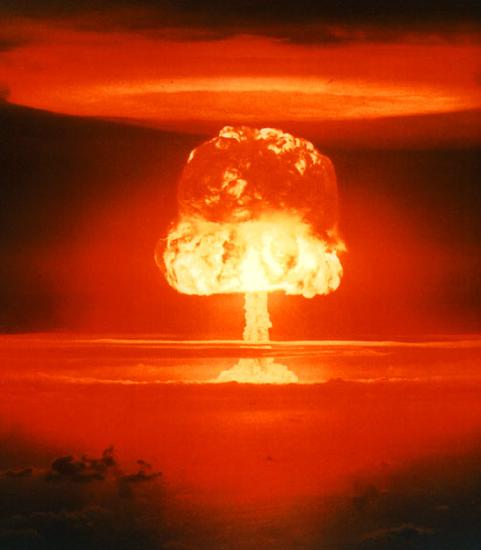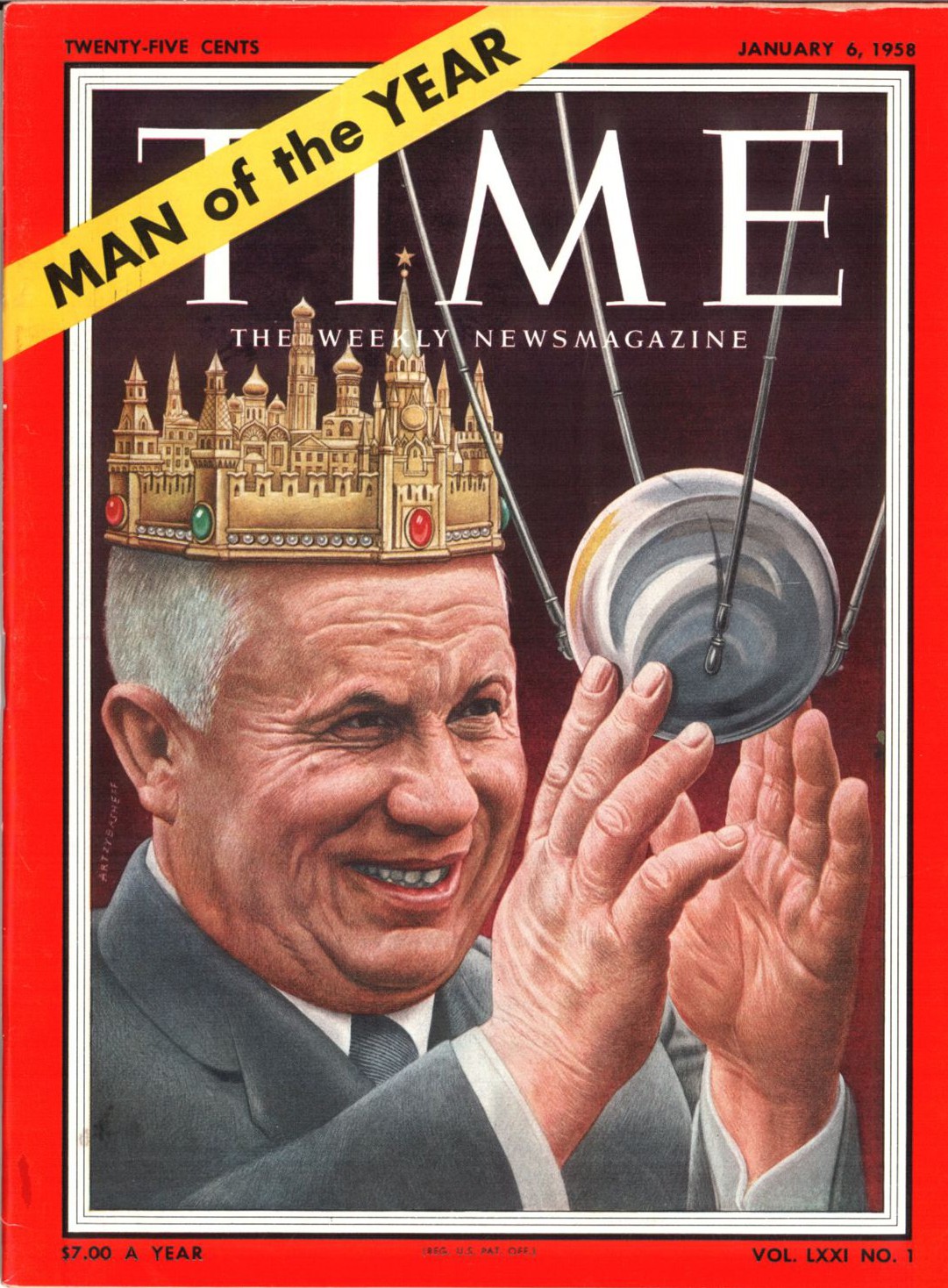18.2: Cold War Era Organizations
- Page ID
- 132608
The Allies had already begun calling themselves the “United Nations,” especially as Latin American republics and other countries began joining the fight against the Axis. In April 1945, diplomats gathered in San Francisco (United States) to design a way for the United Nations to address world problems in a post-war world. In a shift from the unarmed diplomacy of the League of Nations, the UN would have a military. The Security Council, consisting of the original Four Policemen and France, would consult on how best to keep the peace and when to deploy the military power of the assembled nations. There would also be a General Assembly made up of all nations, an International Court of Justice, and a council for economic and social matters. The Soviets expressed concern over how the Security Council would work, but on June 26, 1945, fifty nations signed the U.N. charter.
Side Note: As of April 2022, there are 193 UN Member States. Each of the Member States of the United Nations has one seat in the General Assembly. The Security Council contains five permanent members: China, France, Russian Federation, the United Kingdom, and the United States, and ten non-permanent members elected for two-year terms by the General Assembly. To learn more about the United Nations, you can visit their website.

In an effort to rebuild Western Europe, as well as supply food products, the United States launched the Marshall Plan. The Soviets responded to the $15 billion aid program with an order that their satellite nations reject it. Why? Stalin was worried that the financial assistance would make small nations dependent on western corporations. The United States was anxious to rebuild Europe as quickly as possible, but also to counter the influence of growing communist parties in Italy, France, and other Western European countries. U.S. Secretary of State George C. Marshall shipped food and other material aid, as well as provided financial support to any European country that requested it. The result was the largely capitalist rebuilding of Western Europe and West Germany, while Eastern Europe began industrializing by following Soviet-inspired Five-Year Plans.

Meanwhile, European nations entered new military alliances along East-West lines. In April 1949, Great Britain, France, and other Western European Allies united with the U.S. and Canada in a military alliance, the North Atlantic Treaty Organization (NATO). The group pledged to defend one another in case of attack. NATO became alarmingly relevant later that summer when the Soviets detonated their first atomic bomb, breaking the U.S. monopoly on nuclear weapons. In the ensuing decades, both superpowers would develop advanced missiles, air forces, and submarines to deliver an overwhelming nuclear attack on the other side’s homeland in case of war.
Side Note: As of March 2022, NATO is an Alliance that consists of 30 independent member countries. You can learn more about this organization on their website.
The superpowers adopted a policy of “mutually assured destruction” as a means of preventing a conflict which would almost certainly have destroyed most of the humans and probably much of life on the planet. Britain was next to join the nuclear club in 1952, followed by France in 1960, China in 1964, India in 1974, Pakistan in 1998, and North Korea in 2006. Israel developed weapons in secret in the 1960s, and South Africa developed a couple of weapons in the 1970s but scrapped them and joined the non-proliferation movement by 1991, at the same time the De Klerk government was freeing Nelson Mandela and beginning to end apartheid. In 1991, Kazakhstan left the Soviet Union and inherited a nuclear arsenal larger than that of Britain and France, but became the first nation to scrap its nuclear arsenal.
Side Note: As of March 2022, international watchdog organizations indicated that nine countries - China, North Korea, France, India, Israel, Pakistan, Russia, the United Kingdom, and the United States - possess a total of nearly 13,080 nuclear weapons. Russia and the United States possess roughly 90% of the world’s nuclear weapons, with over 5,500 weapons each.

Another important event that happened in 1949--communist forces led by Mao Zedong defeated the Nationalist armies of Chiang Kai-Shek and established the People’s Republic of China. (We'll talk about East Asia in a later chapter.)

Joseph Stalin died in 1953. After a power struggle in the Politburo, a new Premier, Nikita Khrushchev, took power in Moscow. Khrushchev distanced himself from what he called Stalin’s “cult of personality”. He also revealed the extent of Stalin’s atrocities against perceived political enemies, which had led to the deaths of millions in purges, forced labor, and famine in the previous decades. (A politburo is the principal policymaking committee of a communist party.)
Khrushchev announced a new Soviet foreign policy of “peaceful coexistence” with the West. Further, he pledged to not extend communism by invading other countries but create a military alliance, the Warsaw Pact, within the Soviet Bloc in Europe to counterbalance NATO. Khrushchev wanted Soviet communism to provide a higher standard of living for workers. Achieving this goal was difficult if the military budget was too large, so he sought to lessen tensions with the U.S. and its allies. But there were limits to Khrushchev’s “liberalism”. For example, in 1956, democratic reforms in Hungary led to the possibility of spreading anti-Soviet dissent in neighboring communist countries. The Soviets and their Warsaw Pact satellite countries sent troops and tanks to repress any political changes in Hungary and Eastern Europe.

